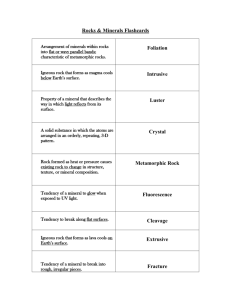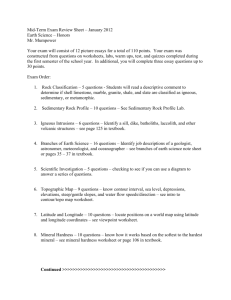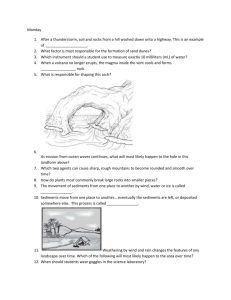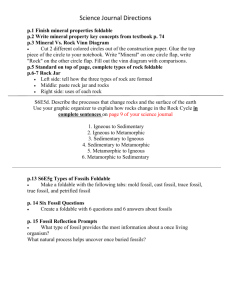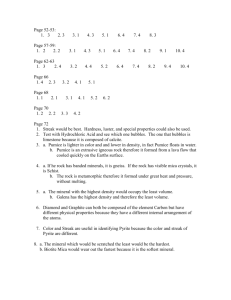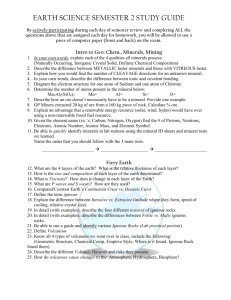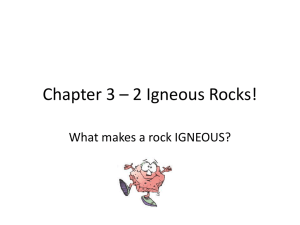Minerals – naturally occurring inorganic
advertisement
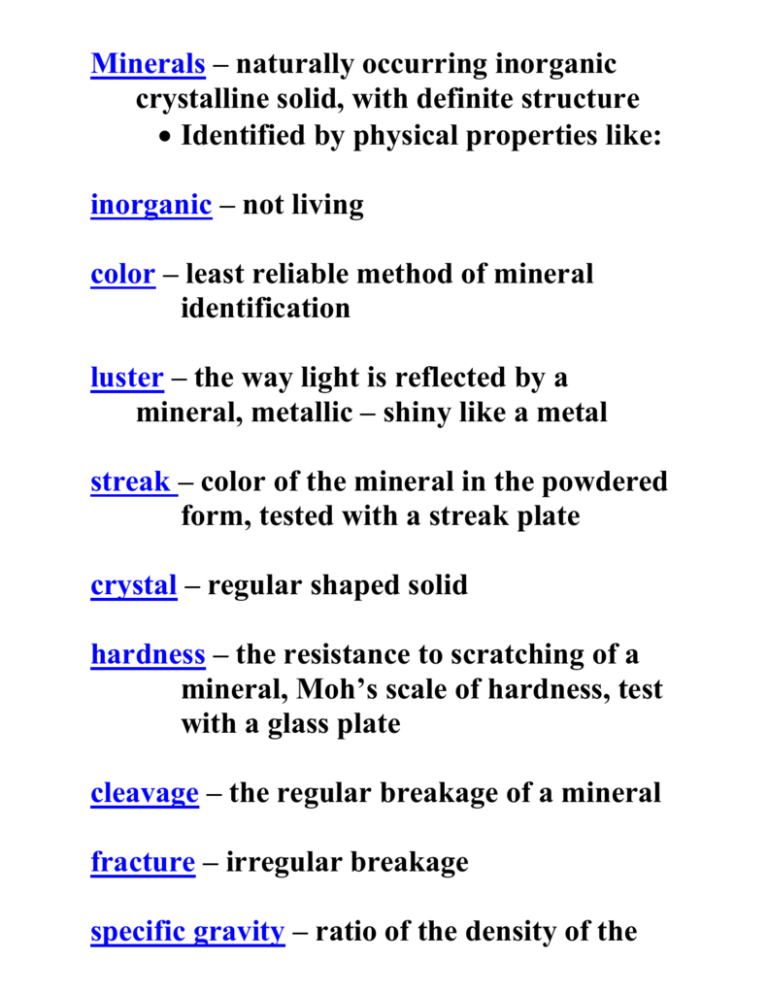
Minerals – naturally occurring inorganic crystalline solid, with definite structure Identified by physical properties like: inorganic – not living color – least reliable method of mineral identification luster – the way light is reflected by a mineral, metallic – shiny like a metal streak – color of the mineral in the powdered form, tested with a streak plate crystal – regular shaped solid hardness – the resistance to scratching of a mineral, Moh’s scale of hardness, test with a glass plate cleavage – the regular breakage of a mineral fracture – irregular breakage specific gravity – ratio of the density of the substance to the density of water rock - solid made of minerals igneous – rock that cooled from a melt sedimentary – rock made from pieces of other rocks or chemical or biologic metamorphic – rock formed from heat and or pressure crystallization – liquid turning into solid (igneous) felsic – light colored, igneous, silica-rich, aluminum-rich, low density mafic – dark colored, igneous, iron + magnesium-rich, high density fragmental – pieces of rock organic – made from once living things fossil – evidence of former life evaporite – sedimentary rock formed from the evaporation of seawater foliation – banding in metamorphic rocks, alternating light and dark colors texture – crystal and/ or grain size in a rock rock cycle – shows the origin and formation of the classes of rocks natural resources – substances that come from Earth renewable – resources that can be replaced nonrenewable – resources that can not be replaced on Earth fossil fuels – coal, oil, natural gas, peat, nonrenewable alternatives energy sources – solar, wind, hydro, geothermal, anything other than using fossil fuels



